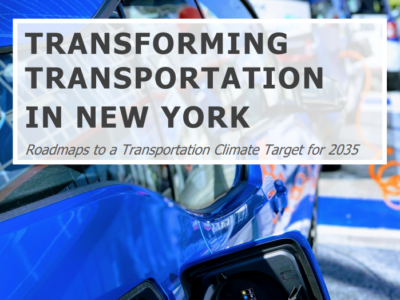
To address the climate crisis, the State of New York hasset an ambitious goal to decarbonize its energy use. It has established a mandate to reduce greenhouse gas (GHG) emissions by at least 40% economy-wide by 2030 and achieve 100% net zero emissions by 2050. While the state has made important strides in reducing GHGs, most reductions to date have focused on the electric sector, with far less attention paid to transportation. Yet the transportation sector represents 36% of New York’s GHG emissions, making it the largest emitting sector of the economy, with motor vehicles accounting for over 80% of those emissions.
If New York is to succeed in reaching its ambitious emission reduction requirements, it will need specific and bold transportation-focused goals and policies. This report shows that by adopting a goal of reducing motor vehicle emissions 55% by 2035 from 1990 levels and implementing a suite of familiar and achievable policies, New York can ensure the transportation sector is on track to meet economy-wide goals, improve public health and the environment, retain billions of dollars in the state’s economy, and promote an equitable transportation sector transformation.

